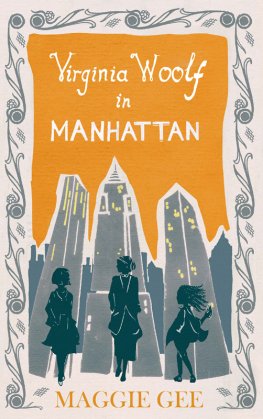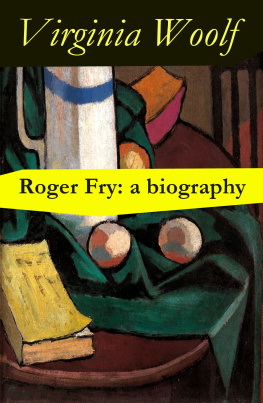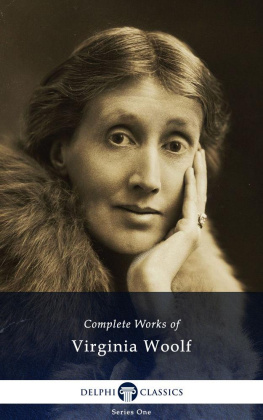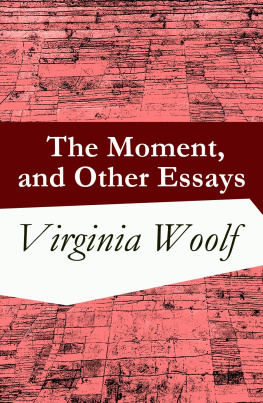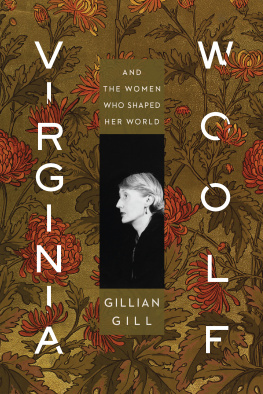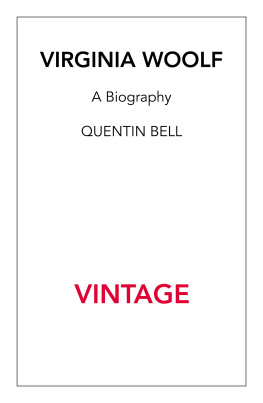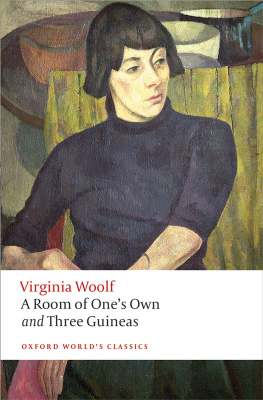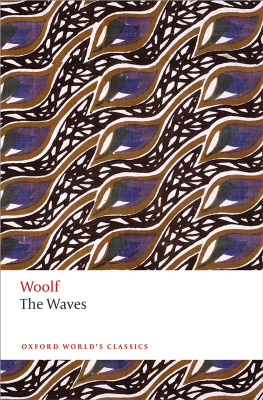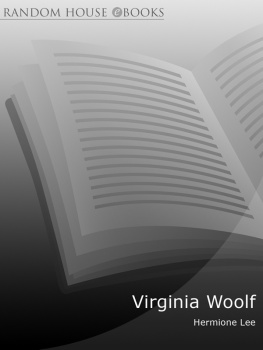Dalsimer - Virginia Woolf
Here you can read online Dalsimer - Virginia Woolf full text of the book (entire story) in english for free. Download pdf and epub, get meaning, cover and reviews about this ebook. year: 2001, publisher: Yale University Press, genre: Non-fiction. Description of the work, (preface) as well as reviews are available. Best literature library LitArk.com created for fans of good reading and offers a wide selection of genres:
Romance novel
Science fiction
Adventure
Detective
Science
History
Home and family
Prose
Art
Politics
Computer
Non-fiction
Religion
Business
Children
Humor
Choose a favorite category and find really read worthwhile books. Enjoy immersion in the world of imagination, feel the emotions of the characters or learn something new for yourself, make an fascinating discovery.

- Book:Virginia Woolf
- Author:
- Publisher:Yale University Press
- Genre:
- Year:2001
- Rating:5 / 5
- Favourites:Add to favourites
- Your mark:
- 100
- 1
- 2
- 3
- 4
- 5
Virginia Woolf: summary, description and annotation
We offer to read an annotation, description, summary or preface (depends on what the author of the book "Virginia Woolf" wrote himself). If you haven't found the necessary information about the book — write in the comments, we will try to find it.
Virginia Woolf — read online for free the complete book (whole text) full work
Below is the text of the book, divided by pages. System saving the place of the last page read, allows you to conveniently read the book "Virginia Woolf" online for free, without having to search again every time where you left off. Put a bookmark, and you can go to the page where you finished reading at any time.
Font size:
Interval:
Bookmark:
Virginia Woolf
Becoming a Writer
KATHERINE DALSIMER

Copyright 2001 by Yale University.
All rights reserved.
This book may not be reproduced, in whole or in part, including illustrations, in any form (beyond that copying permitted by Sections 107 and 108 of the U.S. Copyright Law and except by reviewers for the public press), without written permission from the publishers.
Set in Caslon type by Tseng Information Systems, Inc. Printed in the United States of America.
Library of Congress Cataloging-in-Publication Data Dalsimer, Katherine, 1944Virginia Woolf: becoming a writer / Katherine Dalsimer.
p. cm.
Includes bibliographical references (p.) and index.
ISBN 0-300-09208-3 (alk. paper)
1. Woolf, Virginia, 18821941Criticism and interpretation.
2. Women and literatureEnglandHistory20th century.
3. Woolf, Virginia, 18821941Childhood and youth.
4. Novelists, English20th centuryBiography.
5. Young womenEnglandBiography. I. Title.
PR6045.072 Z583 2001
823'.912dc21 2001003125
A catalogue record for this book is available from the British Library.
The paper in this book meets the guidelines for permanence and durability of the Committee on Production Guidelines for Book Longevity of the Council on Library Resources.
10 9 8 7 6 5 4 3 2 1
For Peter
Grateful acknowledgment is made to the following: The Society of Authors as the Literary Representative of the Estate of Virginia Woolf for permission to quote from the Hyde Park Gate News, The Voyage Out, and To the Lighthouse.
The Executors of the Virginia Woolf Estate and The Random House Group Limited for permission to quote extracts from A Passionate Apprentice, originally published by Hogarth Press.
The Random House Group Ltd. for permission to quote extracts from Moments of Being by Virginia Woolf, edited by Jeanne Schulkind, The Diaries of Virginia Woolf, edited by Anne Olivier Bell, The Letters of Virginia Woolf, edited by Nigel Nicolson and Joanna Traumann, and The Essays of Virginia Woolf, edited by Andrew McNeillie, published by the Hogarth Press.
Harcourt, Inc. for permission to quote extracts from The Voyage Out, copyright 1920 by Harcourt, Inc. and renewed 1948 by Leonard Woolf; To the Lighthouse, copyright 1927 by Harcourt, Inc. and renewed 1954 by Leonard Woolf; Moments of Being, copyright 1976 by Quentin Bell and Angelica Garnett; A Passionate Apprentice, copyright 1980 by Quentin Bell and Angelica Garnett; The Diary of Virginia Woolf, Volume 2, copyright 1978, and Volume 3, copyright 1980, by Quentin Bell and Angelica Garnett; The Letters of Virginia Woolf, Volume 1, copyright 1975, and Volume 4, copyright 1978, by Quentin Bell and Angelica Garnett; The Essays of Virginia Woolf, Volume 1, copyright 1986, and Volume 4, copyright 1989, by Quentin Bell and Angelica Garnett.
CHAPTER 1
To the Lighthouse
CHAPTER 2
The Hyde Park Gate News
CHAPTER 3
Diary, Age Fifteen: A volume of fairly acute life
CHAPTER 4
Journals, Ages Seventeen and Twenty-One: The right use of reason
CHAPTER 5
Early Reviews and Essays: Age Twenty-Two to Twenty-Three
CHAPTER 6
I write of things as I see them: Age Twenty-Four to Twenty-Five
CHAPTER 7
The Voyage Out
CHAPTER 8
On Being Ill
I wish to thank Sally Brown, Curator of Modern Literary Manuscripts at the British Library for her gracious help in allowing me access to the Hyde Park Gate News, and Rodney Phillips, Stephen Crook, and Philip Milito at the Berg Collection of the New York Public Library for their kind assistance in relation to Woolfs early diaries and drafts of The Voyage Out.
I benefited from discussions of this work in presentations to the Gardiner Seminar on Psychoanalysis and the Humanities at Yale, the American Psychoanalytic Association, and the Yale University Mental Health Service. An earlier version of appeared in The Psychoanalytic Study of the Child. For all that I have learned in teaching them, I thank my students at Columbia College and my supervisees at the Columbia University Mental Health Service and at the Weill Medical College of Cornell University.
My association with Yale University Press began with my previous book, and I am delighted to return to old friends. I am grateful to Gladys Topkis, who launched this book; to Susan Arellano, who has seen it through to completion; and to Lawrence Kenney, whose discerning suggestions made my manuscript a better book. I am indebted to Dr. Ruth Shapiro for her thoughtful reading of an earlier draft.
And my deepest gratitude to my family, Emily Liebert, Maggie Pouncey, Chris Pouncey, and my husband, Peter Pouncey, for their generosity to me in every way.
This is not a biography of Virginia Woolf.
There are already many excellent ones from the last quarter of the past century,
. See especially those of Bell (1972), Rose (1978), Gordon (1984), and Lee (1996).
The documentation for Woolfs early life is less abundant, as one would expect, but even here there are surprising and sometimes delightful stores of information. Fortunately preserved, there is the family newspaper that Virginia collaborated on with her sister, Vanessa, and her brothers, Thoby and Adrian, beginning when Virginia was nine years old. Appearing under the banner Hyde Park Gate News, it shows, along with a childs high spirits, her wit, acerbity, and sharp eye for the particular, already precociously developed. Also extant are the journals she kept at the ages of fifteen and seventeen and twenty-one, and letters from this period as well. And there are autobiographical writings. In writing one narrative of her earlier life, she was herself a young woman whose adult life had yet to shape itself; in another, she was a mature woman, looking back toward the end of her life on those earlier years, now from a very different vantage point.
My purpose in this book is to draw together this wealth of material in order to bring into sharper focus a particular time in Virginia Woolfs life. I am interested in the period when she was becoming a writer, the years of her adolescence and young womanhood. During these years, life repeatedly inflicted what she would later call sledge-hammer blows. The first was the death of her mother when Virginia was thirteen years old. She had her first breakdown at this time, and she was thought to be still recovering when she began the earliest of the diaries I shall discuss, the journal she kept at fifteen. Over the course of the year documented in that journal, there would be another death in the family, that of her older half-sister, Stella, who after the death of their mother had stepped into the place of woman of the house.
. Anne Olivier Bell (1990) describes the prodigious scholarship and detective work that went into the gathering of this information.
Virginia was twenty-two years old when her father, too, died; in the wake of his death she had her second breakdown. Still another death would follow two years later, that of her brother Thoby, when Virginia was twenty-four and he twenty-six, returning from a holiday in Greece. These blows fell on an individual who, as her family history suggests, had inherited a marked vulnerability; for much of her life she suffered from manic-depressive illness. Ultimately she committed suicide, walking into the River Ouse with stones in her pockets in 1941 at the age of fifty-nine.
Next pageFont size:
Interval:
Bookmark:
Similar books «Virginia Woolf»
Look at similar books to Virginia Woolf. We have selected literature similar in name and meaning in the hope of providing readers with more options to find new, interesting, not yet read works.
Discussion, reviews of the book Virginia Woolf and just readers' own opinions. Leave your comments, write what you think about the work, its meaning or the main characters. Specify what exactly you liked and what you didn't like, and why you think so.

